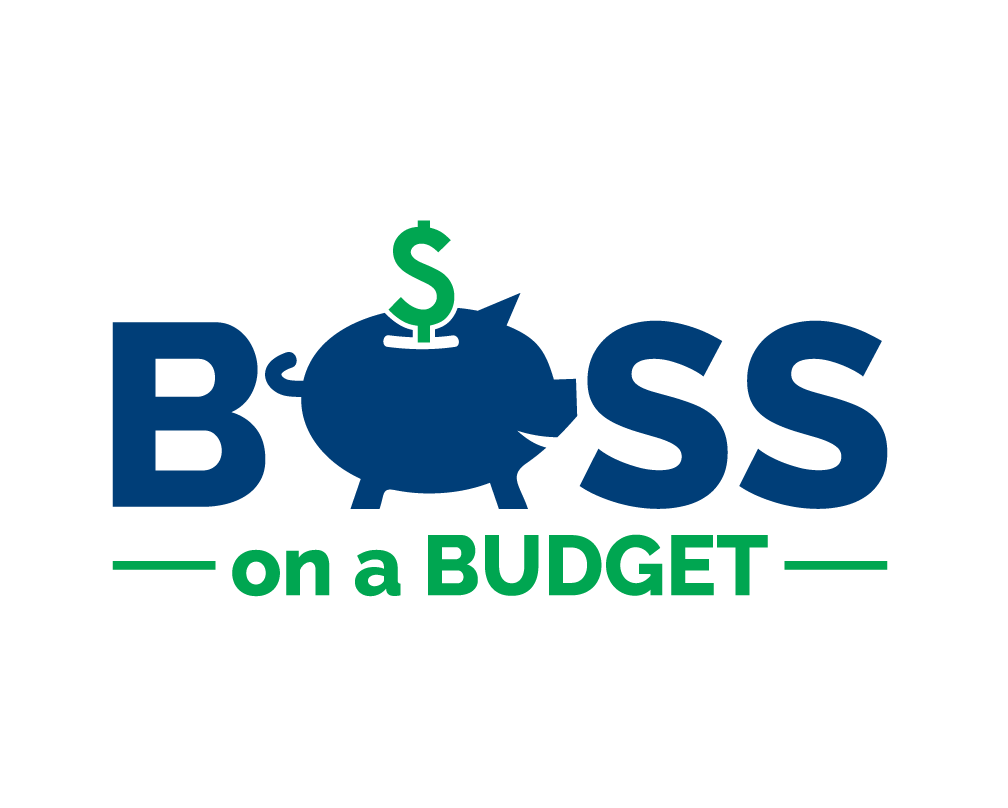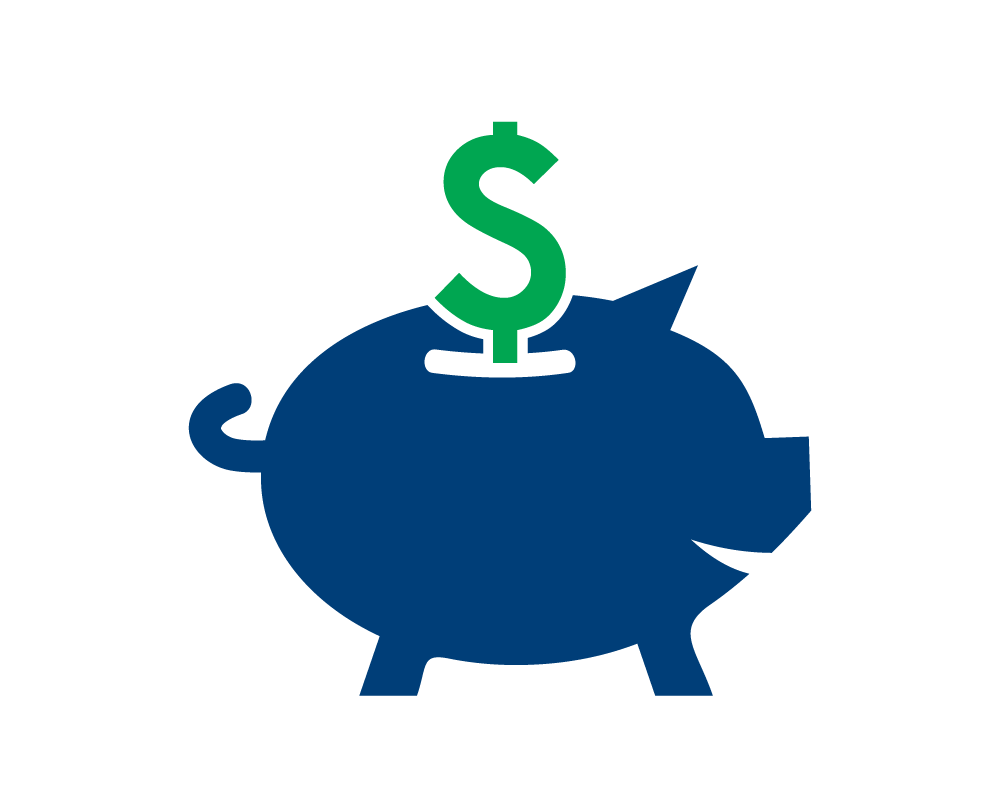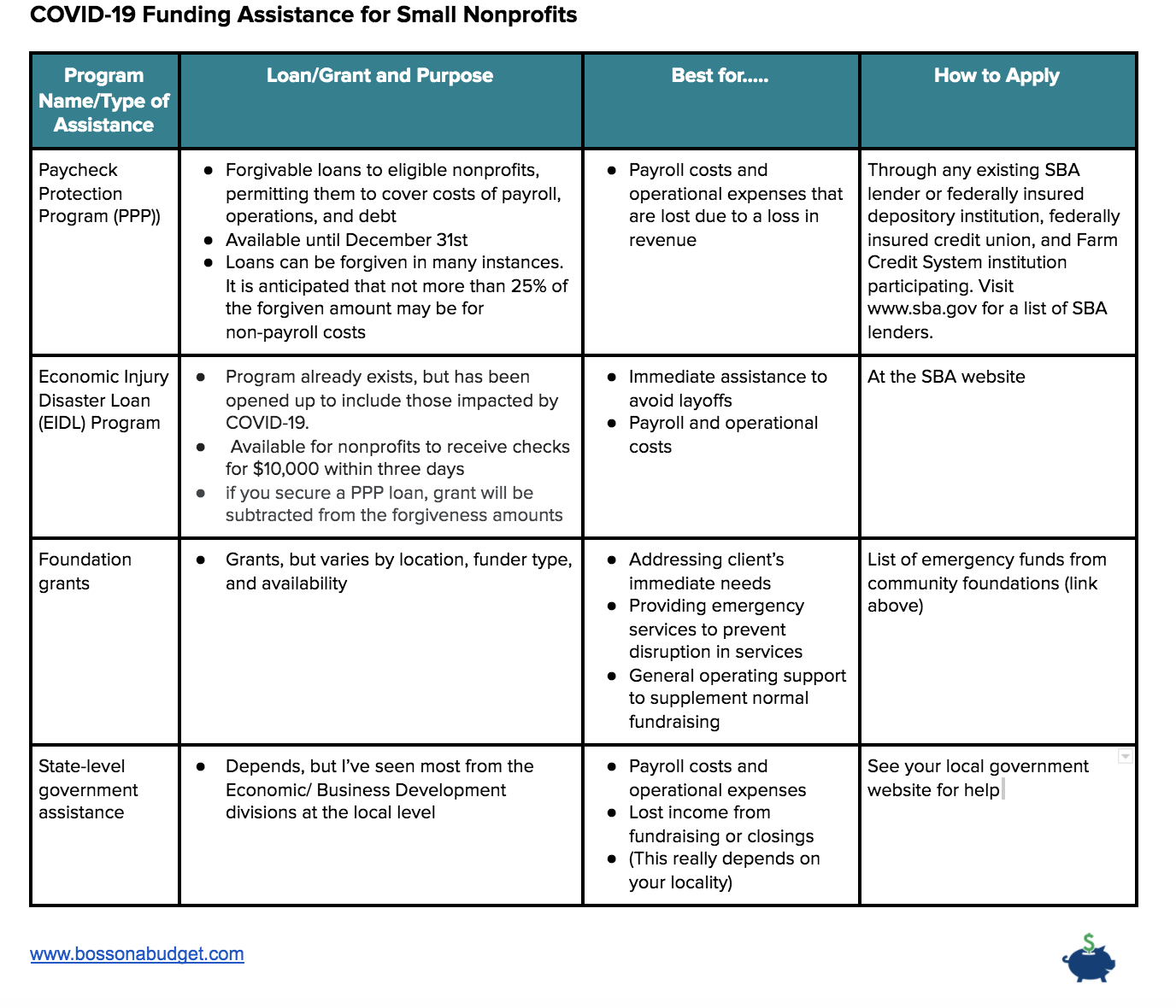Grants and Funding During the COVID-19 Pandemic
It is now April 2020. No one reading this would’ve expected the fallout of the COVID-19 global pandemic. We’re facing stay-at-home orders, many of our family and friends getting sick or dying from the coronavirus, and we will forever be changed by this incredible moment.
COVID-19 has devastated the economy and exposed the vulnerabilities in all of our industries, but especially the nonprofit industry. Many nonprofits who worked so hard to build a strong donor base and a comprehensive fundraising strategy have suddenly been crippled by closings and layoffs. Though some nonprofits have switched to virtual events to raise money and maintain their operations, much of their attention has turned to seeking grants to survive.
The silver lining in all of this chaos is the incredible response from local communities, Congress, government agencies, foundations and corporations. In the midst of the U.S. economy breaking down in front of our eyes, suddenly there has been an outpouring of support from literally everywhere. Nonprofits find themselves in a situation unlike any other - with multiple options to pursue funding and support.
But, having access to so much support can also produce confusion:
How do you know what assistance to apply for?
How do you know when to seek support or when to hold out?
If you’re a new nonprofit and don’t have a long history of providing services, or maybe you don’t have paid staff, how can you capitalize on these opportunities?
Below are some simple steps to navigate the number of funding opportunities currently available.
You may also be wondering….what about my normal grant writing? Should I continue? Stay tuned to the end of this blog article and I’ll give you a few insights.
If you’re new to this blog please note that my focus is on startup nonprofit organizations within the first 5 years of their existence, but this information is helpful for other small nonprofits, as well.
Step 1 - Figure out What you Need
Take stock of what you need and the purpose of the assistance. Ask yourself a few questions:
Is this assistance to help us maintain our normal operations, to provide emergency support to clients, or both?
What specific needs do we have? Funding for rent? Utilities? Payroll? Food or other material items for clients?
Is this for an immediate need or to avoid a crisis later?
Are their new programs, or innovative ways to do our programming that we can pitch to a funder?
These questions can give you insight into how much you want to ask for and help you decide which funding opportunities are right for you.
Step 2 - Gather Your Evidence
The reason for much of this emergency funding is because Congress, the federal government, and funders, want to stabilize your business operations. So that means if they give you assistance, they will likely want to see evidence of the impact of COVID-19 on your normal operations, and an assessment of your loss. So naturally, there is evidence or documents you should have ready:
Financial statements from the previous fiscal year
Financial statement up to the current date of your current fiscal year
Comparison of your revenue and expenses from last year to now
Organizational budget
Estimated amount of financial losses due to COVID-19
Employee lists and payroll records
It’s very likely that any application you complete right now will ask for most of that list, if not all. It’s also important to move quickly because there are thousands of other organizations in the same situation as you, and you want to be ahead of the curve.
Step 3 - Check in with Your Network First
There are multiple places you can find funding support in your backyard, but it will vary by your location. Do an inventory of all the opportunities available to you and take advantage of every one that makes sense for your organization.
By now, you should have already connected to your nonprofit association and community foundation. Your nonprofit association likely has the most up-to-date information on COVID-19 financial assistance available nationally, and most importantly, will probably have information about local funding. Your community foundation has likely set up an emergency fund to address the impact on the local community. (See this list of funding made available from local community foundations). If you have an active United Way chapter in your community, they may also be aware of funding opportunities.
Your community foundation will likely have funding for the community for emergency needs like food, technology, and basic necessities, BUT, they are very aware that nonprofit organizations are an important safety net for the community, and that nonprofits also need infrastructure funding. Make sure you check in with your community foundation to see what funds are available. If you have any type of relationship with them, consider reaching out and suggesting additional ways to support if there is a gap or overlooked population/issue.
Reach out to your past and current funders. I’ve heard numerous stories about funders fast-tracking grant approvals. I’ve also heard of funders changing grants from program to general operating (click HERE if you don’t understand what this means). Some are stepping up and providing funding to cover the loss of fundraising events.
Check in with your current and past funders and let them know how you and your clients are doing. Start the conversation by saying you appreciate their support, but now is a time where their help is even more crucial. If it were me, I’d write something like,
Hi (program officer),
I hope you and your family are well. We at (program) are doing well, but troubled by the impact of the COVID-19 pandemic on our clients. We’ve heard stories that (insert what you know here). In the past, our funding partnership with you has allowed us to make a huge impact on our clients, but we fear that many of the strides our clients have made will be erased by the added stress of COVID-19. I wanted to reach out to see if you had time to discuss other ways we can meet immediate needs to ensure that our clients are safe and stable.
I’d love to chat as soon as you are available.
Thank you,
Signed,
You, Nonprofit Superstar
The language will obviously change based on your needs, but what’s most important is that you know the stories on the frontline and you need to communicate that to those who can control the purse strings and make things happen. You don’t have to exaggerate anything- we all know how bad things are. But in a balanced way, let your funders know how additional support can make a huge difference.
Check in with corporate sponsors. Many organizations had plans for galas and events that were covered by sponsorships from various corporations and they are afraid that the sponsors will start pulling out. Understandably, many businesses have been devastated from this pandemic. However, some are thriving and are willing to step up. I’ve heard many stories about sponsorships staying intact, and even corporations increasing their contributions. However, if you’ve relied on small and local businesses, consider what accepting that sponsorship might do to their operations. Be kind, and be reasonable. There will be plenty of other opportunities to replace that income.
Look into the government assistance available. I’ll go into more detail in the next step, but the federal government has passed 3 bills in response to the COVID-19 pandemic (at the time of publication). The 3rd installment, the CARES Act, includes financial assistance for nonprofits. In addition, your state or local government may have business development funds to support local businesses. See more below.
Step 4 - Decide Which Financial Opportunities Are Right for You
There are plenty of opportunities to help your organization maintain through this crisis, IF you were in operation at the start of the year, and in most instances, IF you have 501(c)(3) tax-exempt status. If that isn’t you, look below for my general advice for your grant writing strategy moving forward.
For those of you who were operational at the start of the year, and you’re wondering how the heck you will make it, I advise you to take advantage of all opportunities that make sense and do it quickly before money begins to run out. Don’t be shy about your organization’s needs.
Now on to the good part. Let’s talk about the financial assistance available and how to decide which one is right for you. Below I will compare the following opportunities (follow the links for more information):
The Paycheck Protection Program (PPP) - NOW CLOSED
Economic Injury Disaster Loans (EIDL) - ONLY LOANS AVAILABLE NOW
Community foundation or other grants
State/local assistance
*note that you can apply for both the PPP and EIDL loans, but they cannot be used to cover the same expenses.
This information is quickly changing. Go here for updates: National Council of Nonprofits
Also for a detailed analysis on COVID-19 federal assistance, go HERE.
Should You Continue Writing Grants?
In my online grant writing community, a couple of members have asked, is this the right time to keep grant writing? What if we have non-coronavirus related requests? Does it make sense to keep writing?
To that I say, just keep writing!
The COVID-19 pandemic has inspired many NEW sources of funding. So while some funders may be tapping into their current reserves or endowments to support emergency efforts, many funders are also receiving new donations or resources above and beyond what’s already used for grants.
Also, when it comes to federal government grants, most of that money has already been appropriated, so many of the funding opportunities and RFPs being released soon will continue as normal. This is not the time to stop writing.
Continue with the same principles that were true 6 months ago
Have multiple sources of revenue; have a regular, ongoing grant writing strategy; and build genuine relationships with your donors and funders. None of your fundraising should stop, it just may look different during these times. And honestly, things may never be the same again. You may need to adapt your practices, but the basic principles will always remain the same. So I’ll say it again: have multiple sources of revenue; have a regular, ongoing grant writing strategy; and build genuine relationships with your donors and funders.
The other piece to remember is that the stimulus bills and the emergency relief is to keep the nation working. So funders want things to get back to normal as soon as possible. If you stop grant writing now, six months from now you’ll find your organization in a world of trouble. There’s nothing that should stop you from still planning for your organization.
What’s even scarier than what we’re living through right now, is the aftermath and the healing process. You have to make sure your organization can regain its financial footing, and keep it. So actually, this is your time to beef up your efforts and go after even more funding opportunities.
Side note - Please note that I’m specifically referencing grant writing here. It may not be appropriate to be as aggressive with your donors, who may be suffering with personal losses or health challenges. You should of course check in with them to make sure they’re doing well, but your fundraising strategy with them will certainly shift.
And finally, some parting lessons for how to move forward and come out of this situation stronger. For new nonprofits that can’t take advantage of many of these financial opportunities, I want to give you some key lessons so you can be prepared in the future:
Build trusting relationships with funders
I’ve been in several conversations with foundations over the past month. They want to help. They’re adjusting their investments so they can deploy resources. They’re reaching out to their grantees to figure out how they can be responsive. You want to be one of the first organizations they think of when it’s time to award money. You can only do that by having an intentional strategy for getting on their radar and building their trust in you. Watch this video for some strategies to build relationships with funders.
Be very good at what you do
Funders will seek you out because you have a reputation for getting *stuff* done. Money is moving very quickly, and funders don’t have the time for the normal grant review and evaluation processes. If you have the credibility in your community and the funder is confident that you can deliver, you’ll be top of the list to receive funding.
Know your clients well, and advocate for them
Most funders do not have direct contact with clients, but you do. You can share their stories and experiences. Have a system for communicating what you’re hearing from your clients so your funders can rely on you for what’s really happening on the frontlines.
Make relationships with multiple stakeholders, which include local government agencies, lawmakers, and advocacy organizations
I’ve seen multiple advocacy groups do an amazing job at communicating to Congress just how huge an impact this virus is having on local communities. Without their work, half the wins that we’ve seen for citizens, and for small businesses and nonprofits would not have happened. Have strong relationships with these stakeholders so you can communicate your needs and so you can have a voice in decision-making.
I wish you all wellness and safety.
Tiffany



